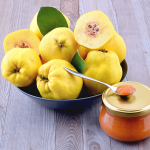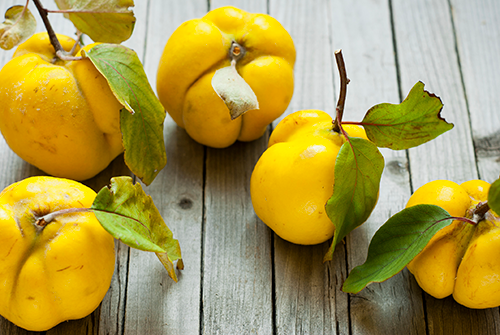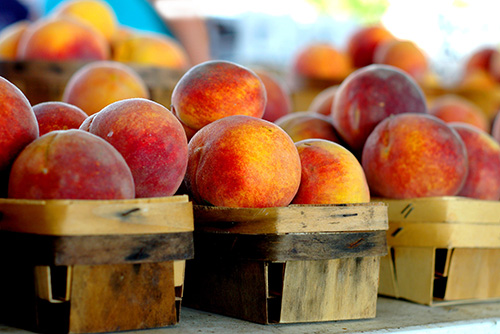Quince. As part of fruits and veggies month, Thrive! is featuring a few favorite fruits and veggies. A whopping 90 percent of adults and children don’t get enough fruits and veggies. So, add this one to your shopping list this week!
HISTORY OF QUINCE
The quince is one of the oldest fruits. Its beauty and sweet taste tempted many in myths and religions. The quince is often associated with the Greek goddess, Aphrodite, the goddess of love and beauty. Many believe that the golden apple that Paris gives Aphrodite in the myth is not an apple at all, but a quince. The quince was important in ancient Greek weddings because of its association with Aphrodite. They gifted the quince to the bride before the wedding to sweeten their breath and was shared by the bride and groom. What better fruit to bless the bride and groom than the fruit of the goddess of love? The quince originated from Kydonia on the island of Crete, and there it has transformed from a sacred ancient greek fruit to the Mediterranean fruit we know today.
FUN FACTS
- The Quince has grown for over 4,000 years in Asia and the Mediterranean.
- The Quince was widely found in paintings and drawings at the lost city of Pompeii.
- The average lifespan of its tree is 50 years.
- The record for the largest quince in the world weighed 5 pounds 2 ounces and had a circumference of 68 centimeters.
SEASON
The quince is available September through January. In colder climates, the quince will have a strong flowery smell, be heavy, and a golden color when it is ripe. In hotter climates, the fruit can be eaten raw because it is slightly softer, but most still prefer to cook the fruit because it will be softer and sweeter after being cooked.
ATTRIBUTES
The quince is a mix between an apple and a pear, which is why it may have been mistaken for an apple in myths. The quince grows on a tree and will be a yellow apple/pear hybrid. The quince is known for its wonderfully strong and pleasant fragrance. Some compare it to a floral smell, but there is nothing that truly describes its wonderful fragrance. The quince will be hard and acidic if you do not cook it, but once cooked it transforms into a red, wonderfully tasting treat.
WHAT YOU SHOULD LOOK FOR
The larger, firmer, and more yellow the quince the better. The quince will have some green if it is not ripe, but you want to make sure to pick a quince with no or very little green. Although the quince is very firm with a seemingly hard exterior, they bruise very easily, so you should be careful when you are handling them.
NUTRITION
The abundance of antioxidants, such as phenolic and phytonutrient, found in a quince can help prevent cancer by eliminating free radicals, the byproducts that can cause cells to mutate or die, from the body. The large amount of dietary fiber in a quince will help improve your gastrointestinal system. This will give you more energy, improve your digestive health, and possibly promote weight loss. The antioxidants in quinces that help eliminate free radicals will also help keep your skin healthy and vibrant. The antioxidants will reduce wrinkles and eliminate blemishes. Additionally, the high levels of vitamin C in quinces can help control allergic reactions and benefit skin conditions when applied as a salve or gel on the skin. The quince is a fruit full of health benefits that just keeps on giving.
STORAGE
Quinces oxidizes very quickly once they are cut, and will only maintain its color if it is preserved in acidulated water. However, if you wrap the uncut quince in a plastic bag or keep it sealed, you can keep it fresh for up to two months in the refrigerator.
HOW TO ENJOY
 Due to their high tannin content, quinces are very acidic and astringent raw, so they are not typically eaten fresh. Many chose to use them in jellies and preserves because of their high pectin content. They are also used in many desserts. Their ability to hold its shape makes them great fruits for poaching or stewing. Quinces are also used as substitutes or compliments to apples and pears in many recipes. Checkout THIS LINK for some recipes using quinces, enjoy!
Due to their high tannin content, quinces are very acidic and astringent raw, so they are not typically eaten fresh. Many chose to use them in jellies and preserves because of their high pectin content. They are also used in many desserts. Their ability to hold its shape makes them great fruits for poaching or stewing. Quinces are also used as substitutes or compliments to apples and pears in many recipes. Checkout THIS LINK for some recipes using quinces, enjoy!



